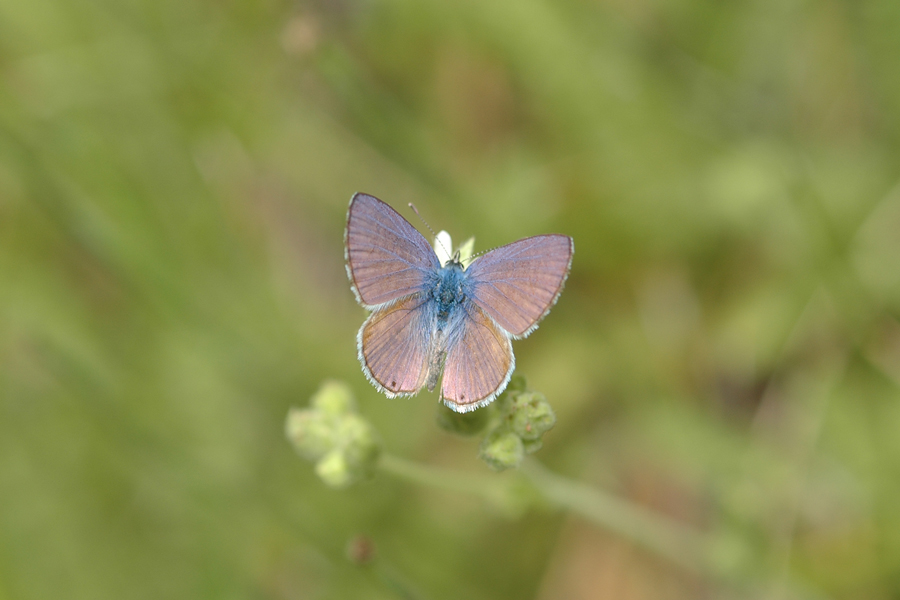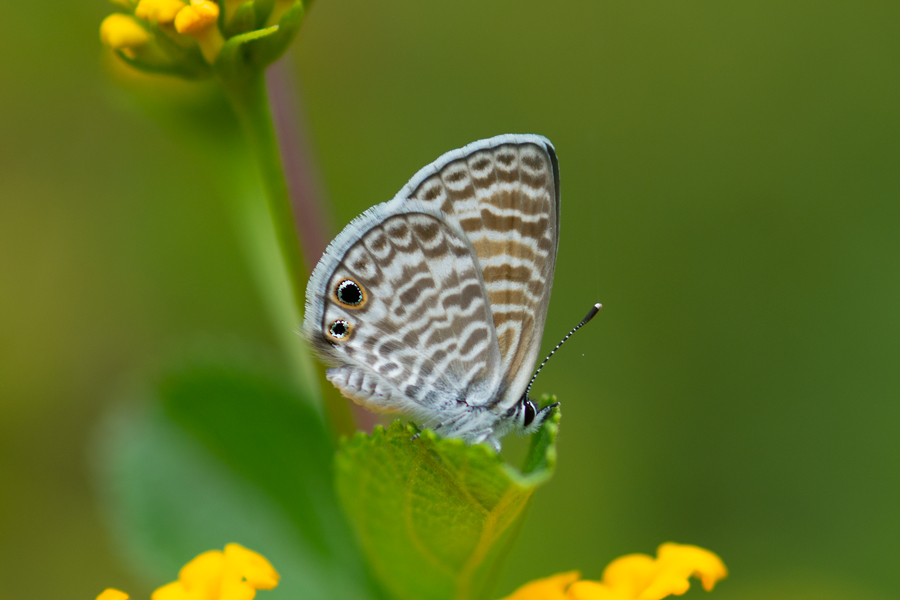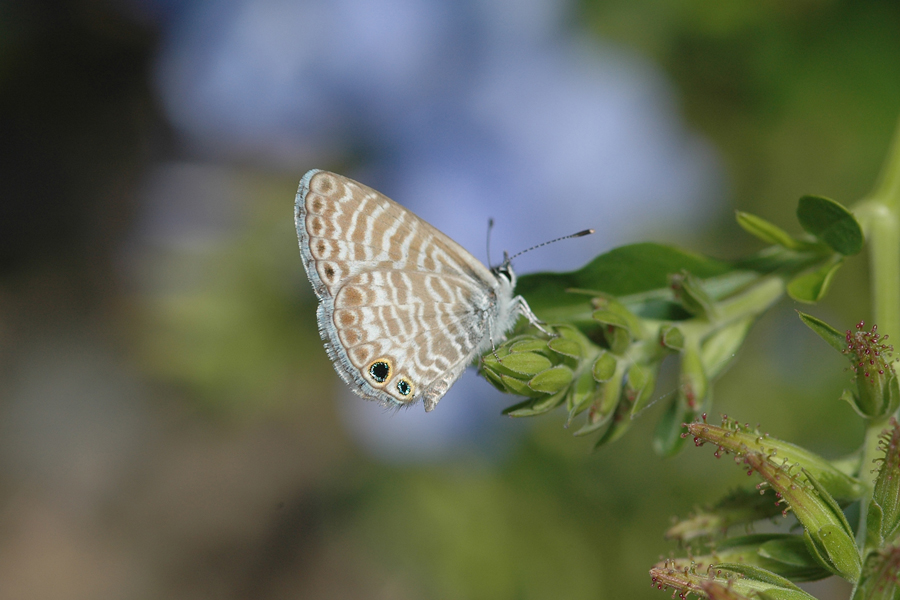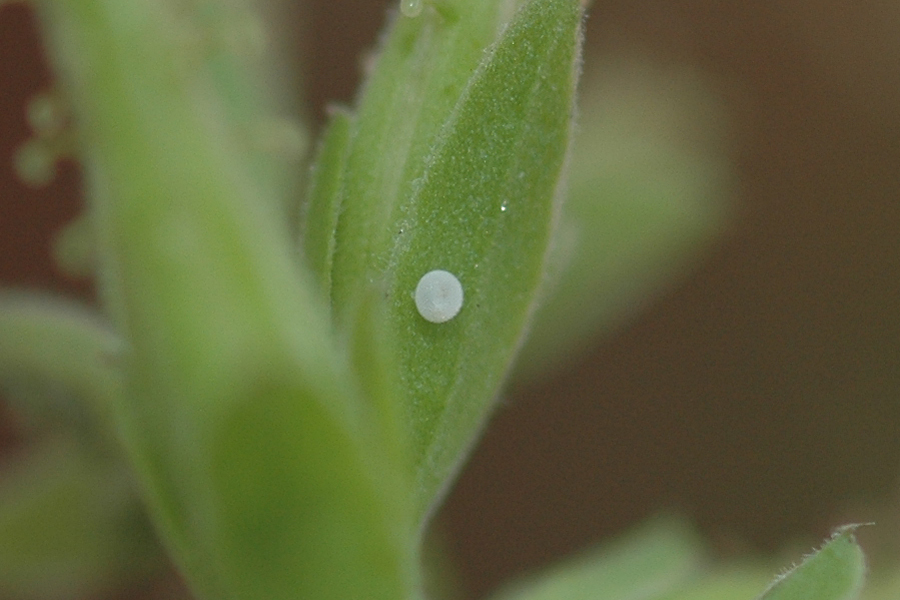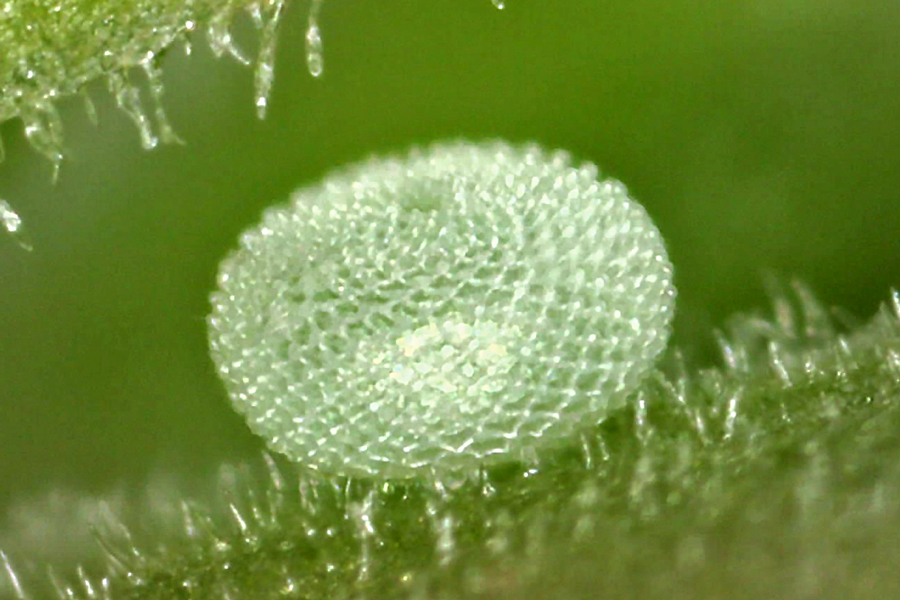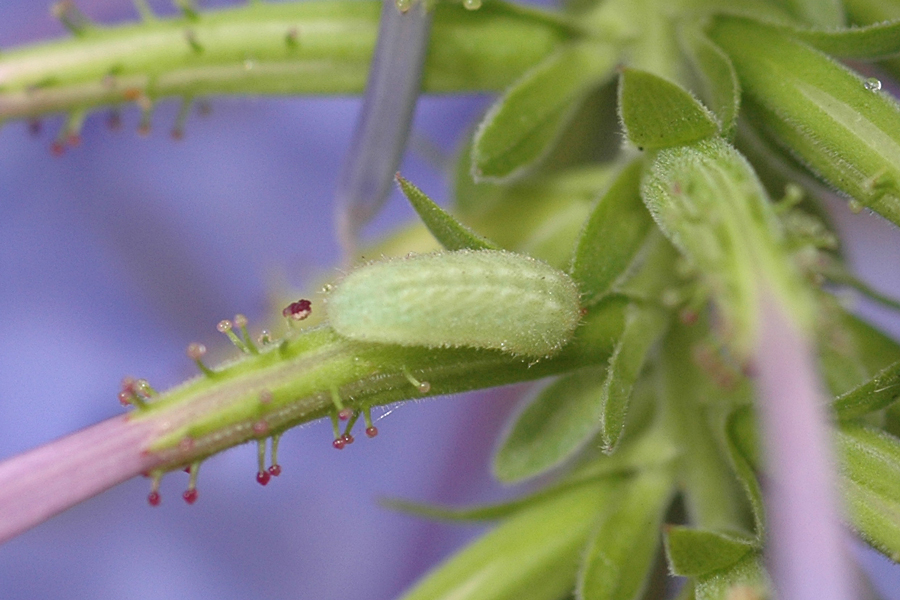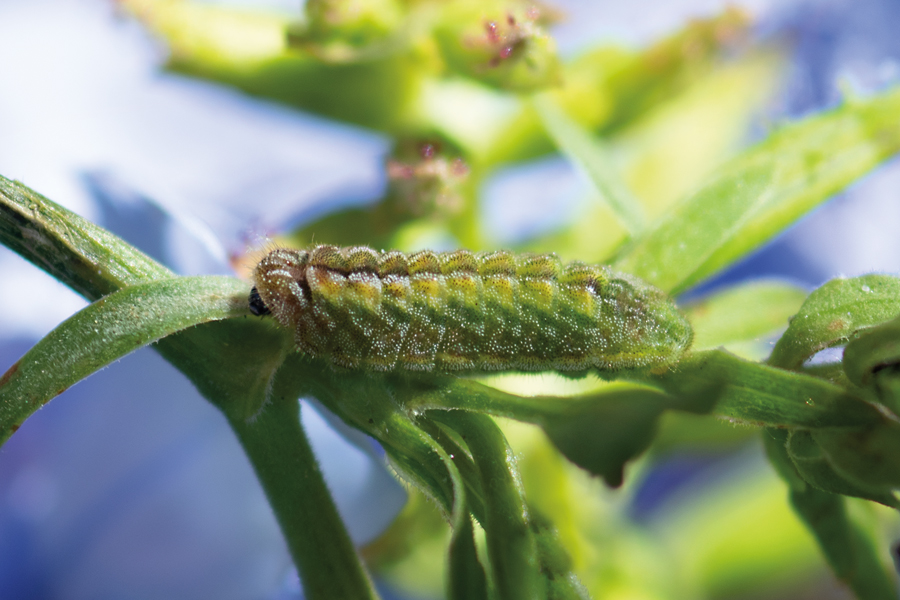Leptotes marina
Marine Blue
This common blue has proliferated as non-native plumbago plants have spread through much of southern California. As for natives, this attractive blue uses common members of the Fabaceae family as larval food plants, such as rattlepod, deerweed, false indigo, and alfalfa. Sexually dimorphic, the male has a blue body grading into wings of pinkish violet, quite different from the brownish females. The early stages are illustrated below. This butterfly has become a year-round presence where the weather allows, and can be abundant in the summer in places around Big Bear and the desert mountains where legumes thrive. I'm updating this page in late 2023, but leaving the captions below in place because it reminds me of when I was first gardening for these butterflies in my yard over fifteen years ago. The two plumbago shrubs I have are almost too big to manage lately, and they still draw many butterflies: marine blues but also almost anything looking to get some nectar.
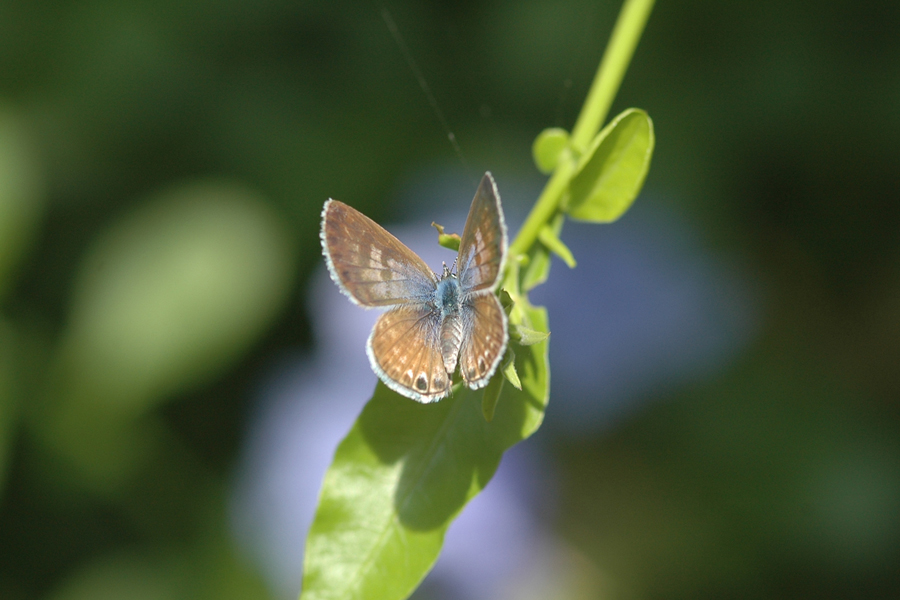
Marine blue - Leptotes marina - female on host plumbago in my backyard garden in Long Beach, CA. August 29, 2008. Plumbago auriculata, a non-native, is also called cape leadwort or blue plumbago.
Marine blue male at Caribou Creek near Big Bear. July 18, 2005.
I have come to not pay much attention to these common blues in the garden or on hikes (they seem to be everywhere I go), but this one was really fresh so I grabbed my camera and it posed for me for several minutes. July 13, 2019.
Another marine blue in my garden. September 7, 2008.
Marine blue egg on blue plumbago in my garden. October 3, 2008.
A 200x magnification of a marine blue egg, also on the blue plumbago in my garden, but 12 years later. September 23, 2020.
A tiny marine blue larva on the plumbago, September 7, 2008. I got what I was hoping for when I put these plants in about a year ago: to attract the butterfly and watch the life cycle. I planted two of the fast-growing plumbago and they quickly grew to pretty large bushes. They're very attractive to marine blues; I see several pretty much every day now.
A different Leptotes marina caterpillar - they can vary quite a bit. October 1, 2020. Twelve years later, same plants, still a great host for this butterfly.
To get a chrysalis of this blue, I reared a larva in a cup to maturity (the one pictured immediately above) and let it pupate there. I've never been able to find one in the garden otherwise. October 5, 2020. This was a small pupa, approx. 9mm long (3/8"). The pupa is below.
©Dennis Walker

